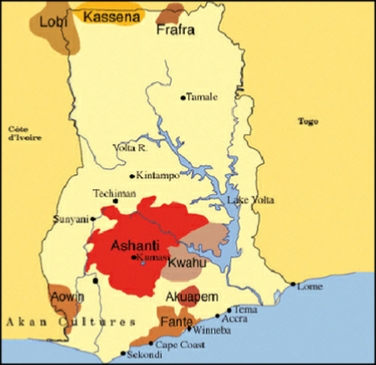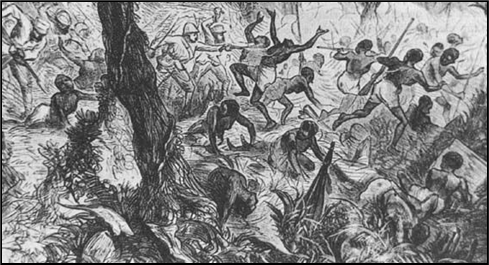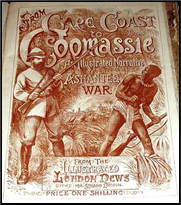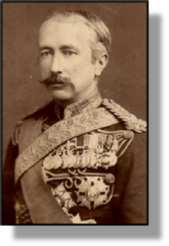


THE THIRD ANGLO-
Acknowledgements
Map (Ashanti): licensed under Creative Commons – https://historyfacebook.wikispaces.com/Ashanti+Kingdom. Ashanti: date and artist unknown. Article: from the Illustrated London News, March 1874. Wolseley: by the London Stereoscopic Company, date unknown – Wellcome Library, London.
 xxxxxThe Ashanti Empire, formed in 1689 by Osei Tutu, had become one of the most powerful states in West Africa by 1814. Ten years later, as we have seen, the Ashanti advanced to the coast and came into contact with the British, then busy strengthening their hold over their colonial territories of Sierra Leone, the Gambia and the Gold Coast -
xxxxxThe Ashanti Empire, formed in 1689 by Osei Tutu, had become one of the most powerful states in West Africa by 1814. Ten years later, as we have seen, the Ashanti advanced to the coast and came into contact with the British, then busy strengthening their hold over their colonial territories of Sierra Leone, the Gambia and the Gold Coast -
xxxxxThere followed 30 years of relative peace, but in 1863 a large Ashanti force crossed into British territory in pursuit of a fugitive, and the incident erupted into the Second Anglo-
 xxxxxThen in 1873 the British purchased the Dutch Gold Coast and troubled flared up again. This territory included Elmina, a coastal city notorious as a centre of the slave trade and claimed by the Ashanti. They invaded the territory in large numbers and the Third Anglo-
xxxxxThen in 1873 the British purchased the Dutch Gold Coast and troubled flared up again. This territory included Elmina, a coastal city notorious as a centre of the slave trade and claimed by the Ashanti. They invaded the territory in large numbers and the Third Anglo- under the command of Major General Sir Garnet Wolseley, a veteran of the Crimean War. Withx2,500 British troops and a large native force he defeated the Ashanti at the Battles of Amoaful and Ordahsu, overthrew the Ashanti ruler, Kofi Karikari (1867-
under the command of Major General Sir Garnet Wolseley, a veteran of the Crimean War. Withx2,500 British troops and a large native force he defeated the Ashanti at the Battles of Amoaful and Ordahsu, overthrew the Ashanti ruler, Kofi Karikari (1867-
xxxxxAs we shall see, the final confrontation between the two sides -
 xxxxxIncidentally, the successful campaign waged by Major General Sir Garnet Wolseley (1833-
xxxxxIncidentally, the successful campaign waged by Major General Sir Garnet Wolseley (1833-
xxxxx…… As noted earlier, the journalist Henry Morton Stanley reported on the British campaign against the Ashanti in 1873. In his newspaper, the New York Herald, he advised the troops taking part to “wear flannel next to the skin, bathe twice a day, avoid the sun, and exercise moderately”. It was soon after this assignment that, upon hearing of Livingstone’s death, Stanley decided to take up the great explorer’s work.
Including:
Second Anglo-
Ashanti War

Vb-


